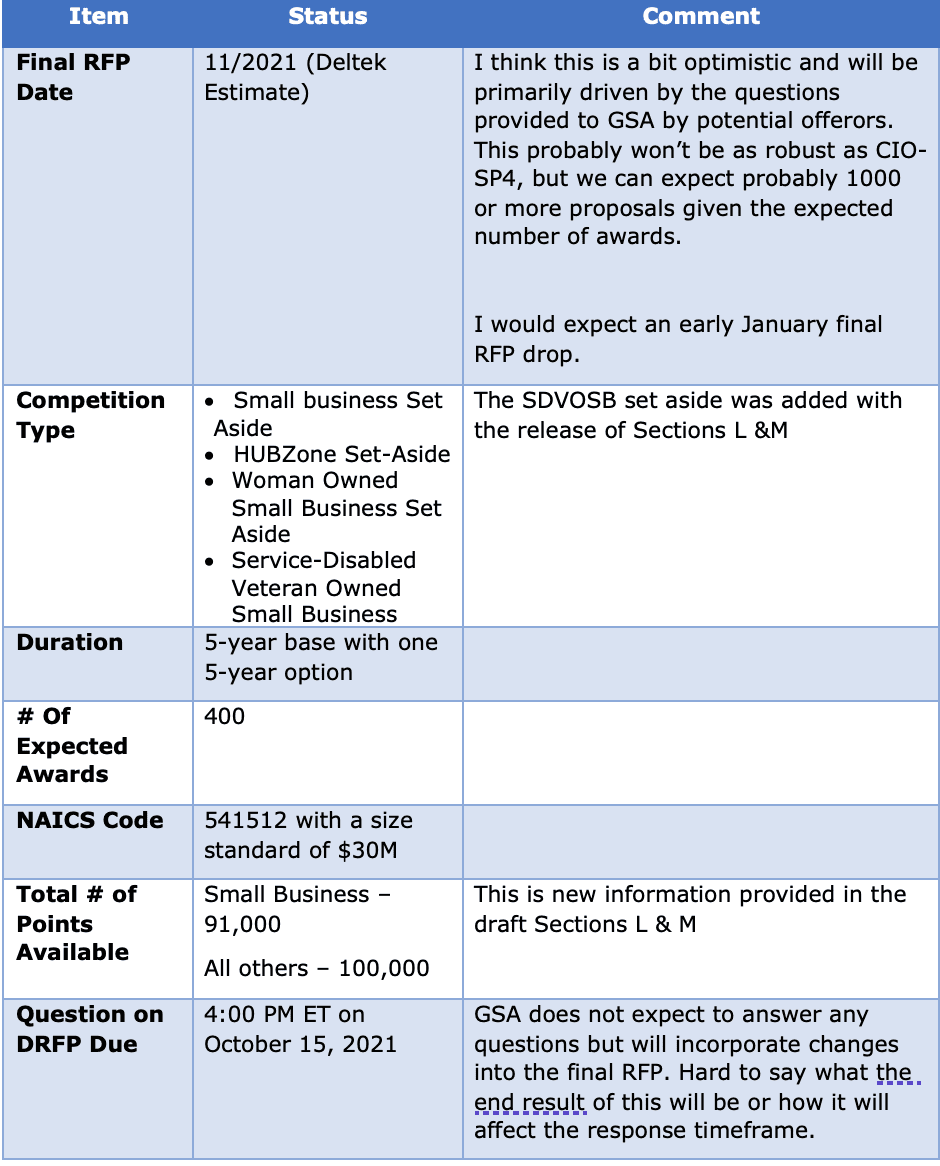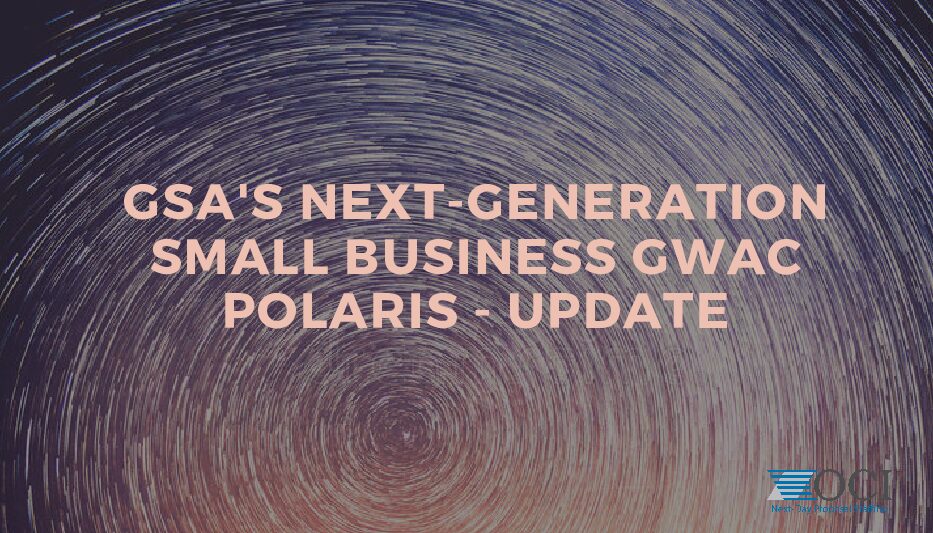GSA‘s Next-Generation Small Business GWAC Polaris is nearing release. This update has been prepared by an SME deep in the program and its history.
This is the 11th hour. Now is the time for bidders to closely focus on all the work needed to complete a winning proposal.
On September 24th, the GSA provided an update to the Polaris Sections L & M which provides some additional clarity for this major acquisition.
After a long process, we are nearing the goal.
Polaris GWAC Update Analysis
The following table summarizes what we know now and is followed by interpretation of the facts:

I would note that the GSA did not, nor would I expect them to, release a minimum cutoff point total. I think for planning purposes bidders should shoot for somewhere in the neighborhood of 80,000 points to be a viable bid.
Meaning of the Late Release: GSA had stipulated in their early summer update that a Polaris draft would be released in the early fall and that they would minimize any interference with end-of fiscal year activities. Given the timing of release, many offerors mired in those activities have probably not reviewed the Polaris draft document. I think the major impact of this will be a later final RFP release, perhaps as late as early January of 2022 although a GSA “Christmas gift“ wouldn’t necessarily surprise any of us who have been in the business for a while.
Thinking of bidding GSA’s Next-Generation Small Business GWAC Polaris?
Here is where you should be in the process: Given the amount of forewarning provided by the GSA on this procurement, many companies should be down the path with only minor tweaks required when the final RFP is released. Having said that, there are several things that should already be in progress or started in the very near future. These are:
- Getting your proposal team identified and assigning roles. The documentation requirements of this response are substantial, and you may need more than one individual to chase things down. This also includes identifying outside resources, as necessary.
- Downloading a copy of the draft document and familiarizing your team with the requirements.
- Beginning the process of identifying the project summaries and past performance topics/contracts and starting the process of fleshing out at least an outline level of their content. We don’t know the page count, but a best guess is each write-up will be in the 5–10-page range for the relevant experience and emerging technologies (Volume 2). They did reduce the maximum number of projects to five for relevant projects and three for emerging technologies. This means you could be looking at an 80-page document for Volume II.
- Following the requirements of the draft document, establish a system to track all the documentation that will be required to support your proposal. This may include original award documents FPDS-NG reports, statements of work, CPARS, etc., or a mix based upon your individual situation.
- Making sure that all your certifications and accounting documentation are current. If your last CAS audit was more than a couple of years ago, consider having your third-party auditor/CPA provide a letter asserting that there have been no material changes.
- Using the scoresheet from the draft documents, conduct an initial appraisal of your potential points. We don’t know what the cutoffs will be, but we do know that the first level of evaluation will be a “rack and stack” of those scoresheets. Supposition is they will rank order by socio-economic status, allocate a number of possible awards, and then work the points to get an optimal mix of potential awardees. Expect this number to be well over 400 and then be culled by the further evaluation processes.
You should plan to complete most of these bullet points in the mid-November timeframe to be ready if GSA actually meets their stated goals.
What is Needed to Win Polaris GWAC:
There are a number of things necessary to be successful:
- First and foremost is attention to detail. The second evaluation pass will be for “Acceptability.” This seems to be a validation that all required documentation has been provided. Technical, Risk, and Responsibility evaluations will only be performed on those proposals that meet the first two gates.
- A solid understanding of where your projects stand with regards to the possible points. This is really an exercise in optimization to see the best mix of projects. You may have to take a project with lesser “meat” but with more scored attributes than you might expect. That is why running the scoresheet at this point is most important.
Having an outside third-party review your status and provide you with some insight would probably be helpful, particularly if your bid and proposal teams are tied up with other opportunities.
Proposal Readiness Review (PRR)
OCI is offering to perform a Proposal Readiness Review (PRR) for your company. In the PRR, a qualified professional will:
- Examine your progress
- Estimate your point score
- Review your teaming strategy
- Assess your Experience and Past Performance
- Help prepare your plan to finish a WINNER
Need help with GSA’s Next-Generation Small Business GWAC Polaris?







Leave A Comment